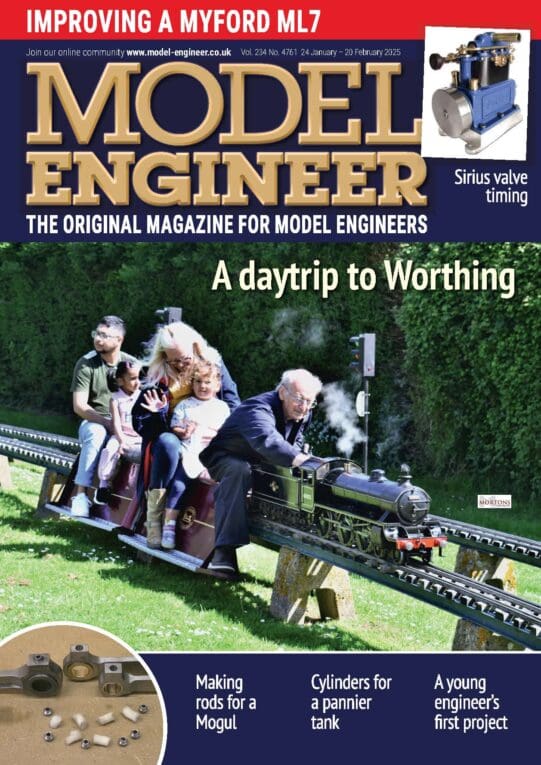Ex work colleague came round with an early Russian camera (KIev 6S), made at Camera Factory No.6 in Kiev in 1970-80’s. This was a large format camera weighing in at around 2Kgs with a large prismatic veiwfinder/rangemeter fitted on top. The eyepiece could take additional special diopter adjusting lenses but these are no longer available from the only repairer in Kiev. He asked me to have a go at making a 2.5 diopter lens from a £1 pair of reading specs.
The lense needed to be 16mm diameter. I popped a lens from the spectacle frame and initially tried to hold it between a 1/2″ diameter dowel held in 3 jaw chuck on Cowells ME90 lathe and with a further dowel on the rotating tailstock. This was going to be an interrupted cut. Started okay but no matter how much pressure I put on via the tailstock it would spin and consequently scratch the plastic lens.
For the next attempt I used four jaw chuck, roughly centralised the lens and then trepanned the centre of the lens out. I had recently bought a very expensive Nikcole 8mm sq tool holder and associated 0.8mm wide parting tool and this worked very well. I had to cut a much wider groove round the lens to give clearance for the bottom of the tool, as I did not wish to grind any of it away. I cut 95% of the way through and then took out of chuck and used Stanley knife to cut required lens away. This was tested for diameter, fitted nicely but the thickness, around 3mm prevented the eyepiece screwing in more than 2 turns. The DRO was now all set up for the 16mm diameter.

His optician had charged him £25 for a 25mm diameter and given him a blank for free. I now had a go at the blank.
Reversed the jaws on the 3 jaw chuck and held the 65mm glass with concave face towards the chuck. Started to trepan the required diameter and then stopped and checked all okay dimension wise. Then moved in a further 2.5mm diameter and went in 1.5 mm deep into the lens. Gradually moved the cross-slide out until DRO read zero, then wound carriage in till I could see the tool was about to break through the front of the lens. Carefully removed lens from blank. I now had a 1.5mm deep recess around the perimeter 2.5mm wide. This now enabled the eyepiece to be screwed in to full depth and hold the lens firmly.

In the picture above you can see the recess left when the lens was removed.
Now repeated the exercise on the 25mm lens the optician had produced. This worked okay but the remnants of the lens disintegrated as I was about to break through.
Both the lenses fitted perfectly and my colleague could now use the viewfinders without spectacles and went away very happy.
Colin
Dalboy.











